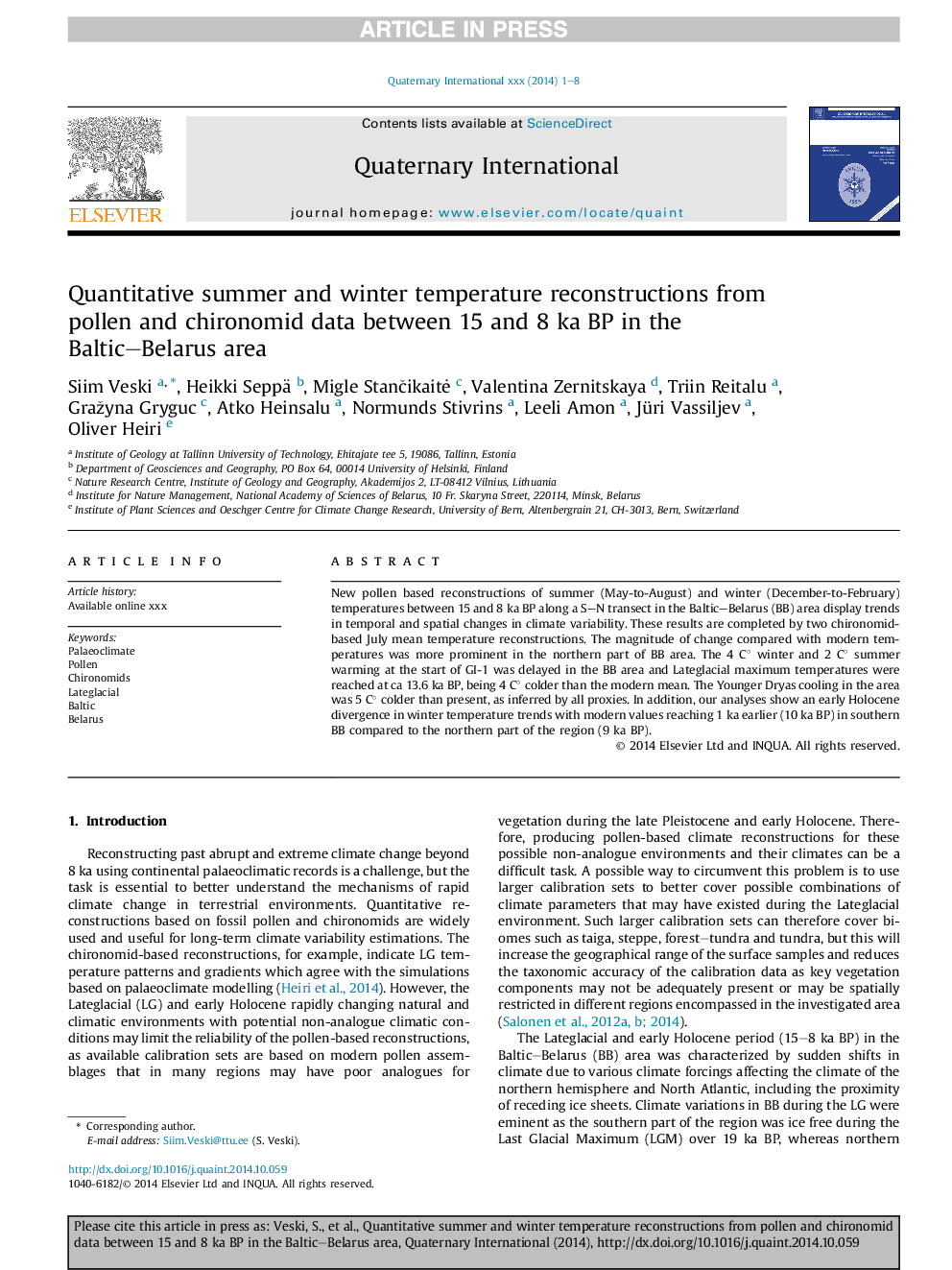| Article ID | Journal | Published Year | Pages | File Type |
|---|---|---|---|---|
| 7451397 | Quaternary International | 2015 | 8 Pages |
Abstract
New pollen based reconstructions of summer (May-to-August) and winter (December-to-February) temperatures between 15 and 8 ka BP along a S-N transect in the Baltic-Belarus (BB) area display trends in temporal and spatial changes in climate variability. These results are completed by two chironomid-based July mean temperature reconstructions. The magnitude of change compared with modern temperatures was more prominent in the northern part of BB area. The 4 C° winter and 2 C° summer warming at the start of GI-1 was delayed in the BB area and Lateglacial maximum temperatures were reached at ca 13.6 ka BP, being 4 C° colder than the modern mean. The Younger Dryas cooling in the area was 5 C° colder than present, as inferred by all proxies. In addition, our analyses show an early Holocene divergence in winter temperature trends with modern values reaching 1 ka earlier (10 ka BP) in southern BB compared to the northern part of the region (9 ka BP).
Related Topics
Physical Sciences and Engineering
Earth and Planetary Sciences
Geology
Authors
Siim Veski, Heikki Seppä, Migle StanÄikaitÄ, Valentina Zernitskaya, Triin Reitalu, Gražyna Gryguc, Atko Heinsalu, Normunds Stivrins, Leeli Amon, Jüri Vassiljev, Oliver Heiri,
